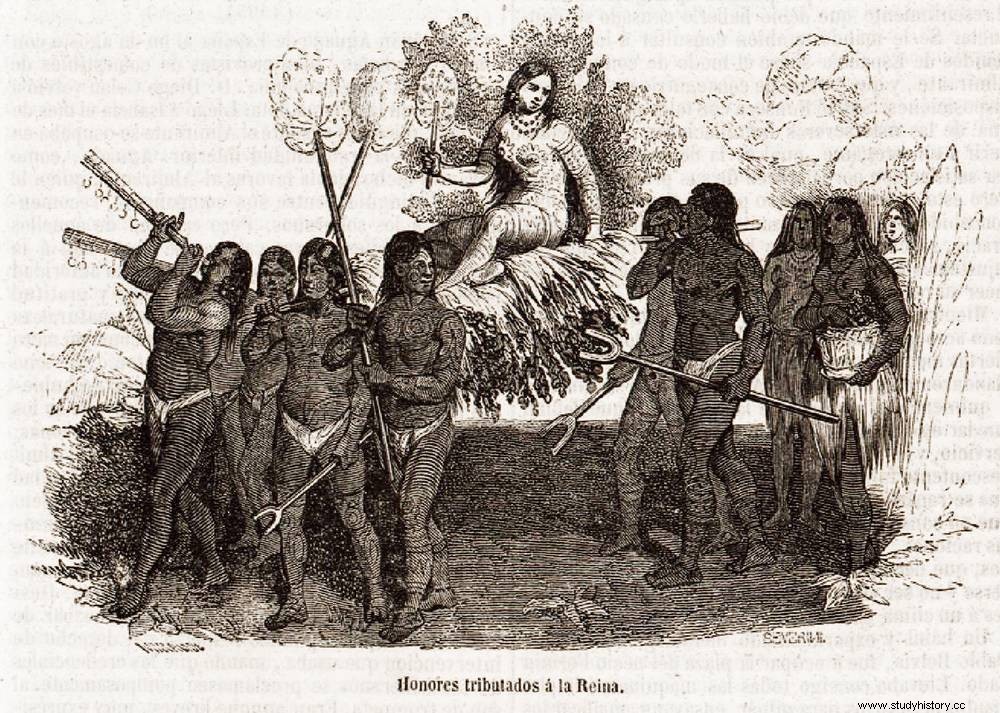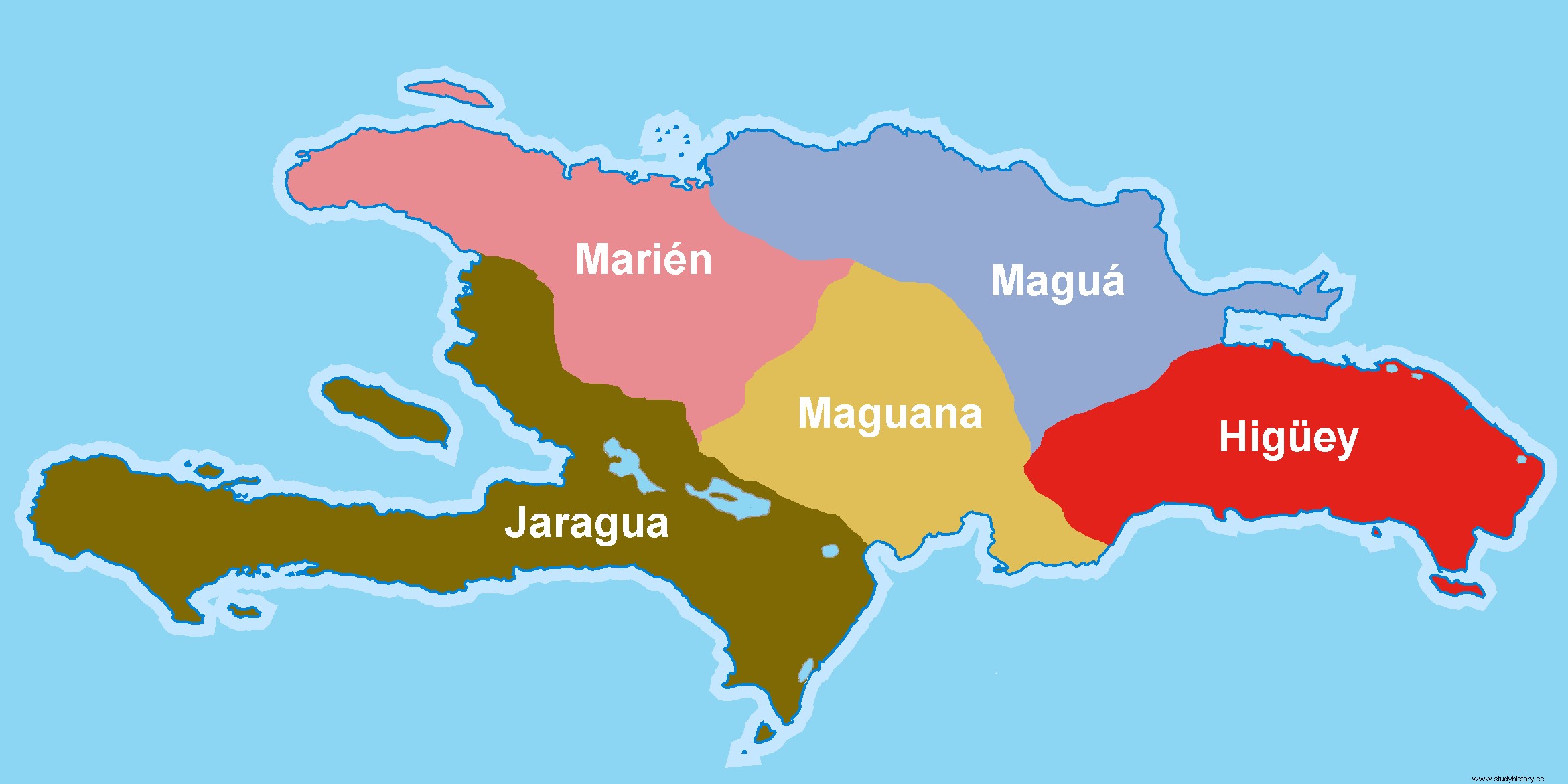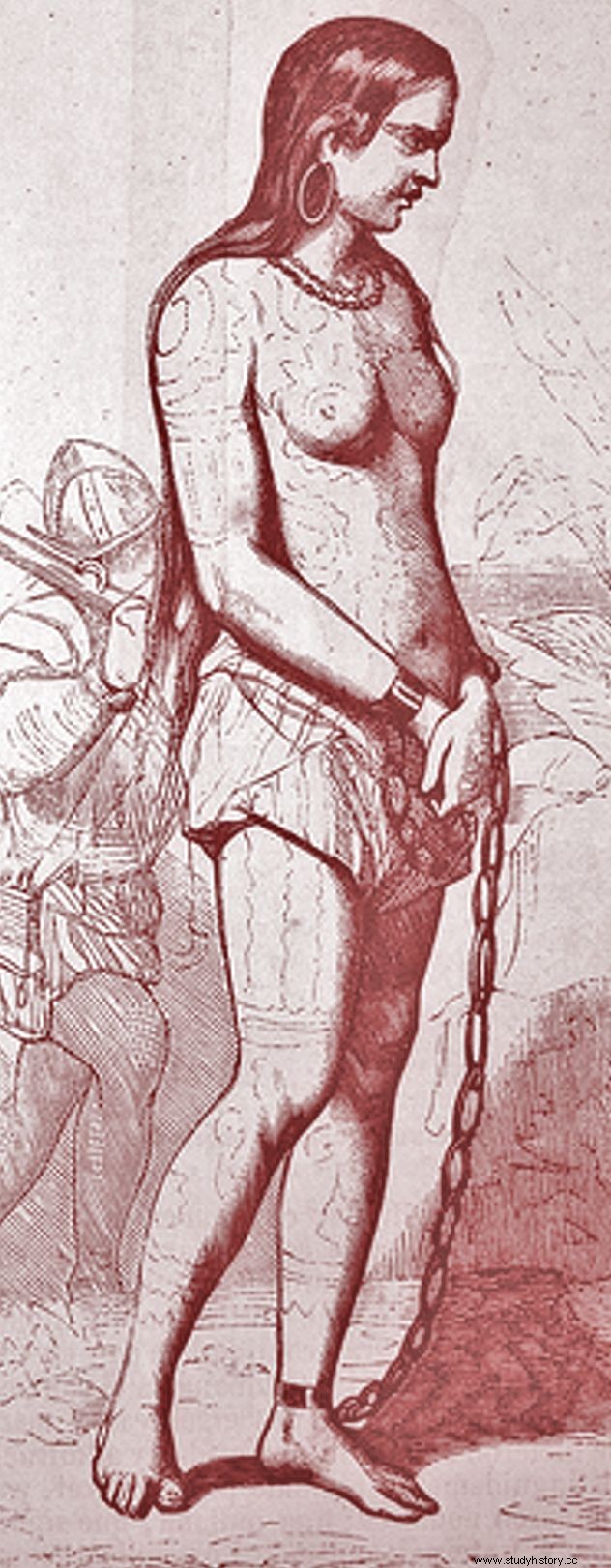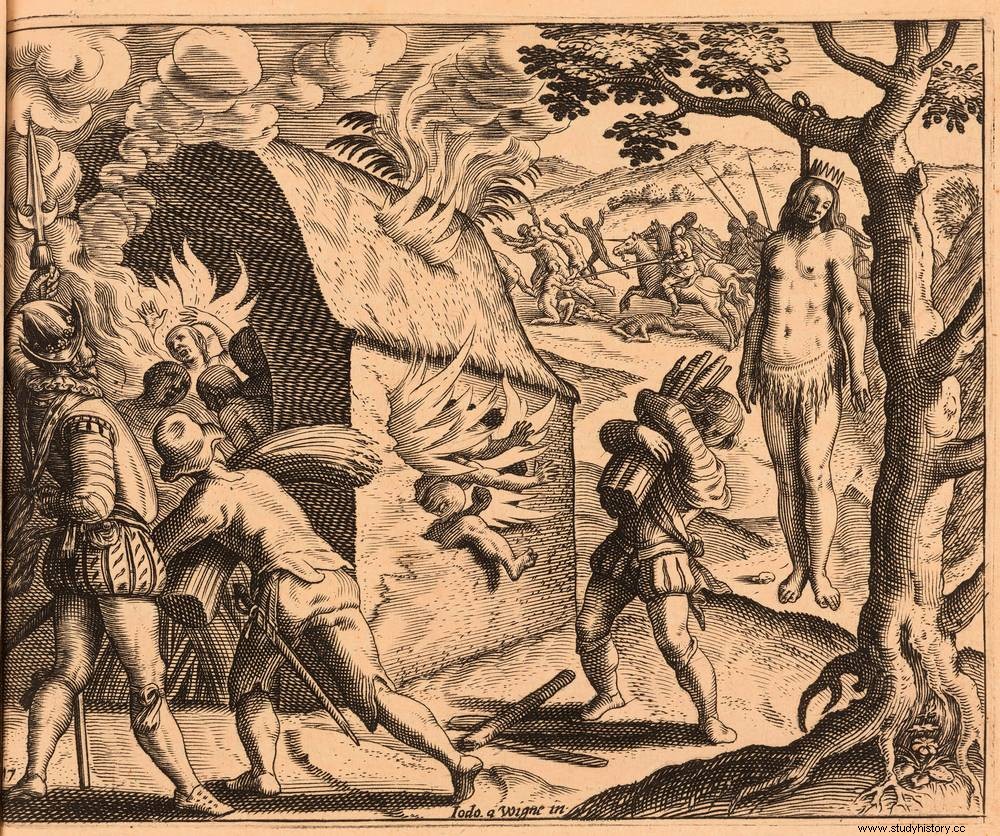Sovereign of the Taino people on the island of Ayiti, sister and wife of the cacique, Anacaona (1474 – 1503 or 1504) is famous for her resistance against Spanish colonization.
Sister and wife of cacique

Anacaona was born in 1474 on the island of Ayiti, now known as Hispaniola and divided between Haiti and the Dominican Republic. She comes from the region of the current city of Léogâne in Haiti, a few kilometers from the capital Port-au-Prince. A member of the Taino people, Anacaona is the sister of the cacique (tribal chief) Bohechio, who governs the caciquat of Xaragua; in the Taino language, its name means "golden flower".
Anacaona is renowned for her intelligence, her beauty, her grace, her poetry and her dance. She composes songs and poems that she recites during religious festivals, ceremonies or receptions that she organizes for her guests. The priest Bartolomé de las Casas will speak of her as a "very noble person and great lady". Anacaona marries Caonabo, cacique of the caciquat de la Maguana, with whom she has a daughter called Higüemota.

First contacts
Anacaona grew up before the arrival of European settlers in America. She was eighteen years old in 1492, when Christopher Columbus and his crew set foot on the island after landing in Cuba. At first, Anacaona is curious, welcoming and even admiring towards the Spaniards; impressed by their knowledge and their civilization, she considers them to agree as divine messengers. The behavior of the Spaniards will quickly overturn his opinion.
Christopher Columbus founded the fort of La Navidad on the island of Ayiti, in which he left 39 men, before returning to Spain. On the spot, the settlers are violent and greedy; they increase the looting and kidnapping of women. From admiration, Anacaona passes to distrust, fear and anger. With her brother and her husband, she decides to chase the invaders from the island. When Christopher Columbus returned in November 1493, he found La Navidad destroyed and its occupants murdered. Suspected of having organized the destruction of La Navidad, Caonabo is arrested and sent to Spain; he dies in a shipwreck on the way. Anacaona then returns to live with her brother. When he dies in turn, she takes over.
Revolts
Following the arrest of Caonabo, the caciques of Managua submit to the Spaniards. Christopher Columbus founded the colony La Isabela, about a hundred kilometers east of the destroyed fort, then left the island, leaving the command to his brother Bartolomeo. Under his supervision, the situation deteriorates. The abuses committed by the settlers are increasing, in particular due to the acceleration of the exploitation of the gold deposits of the island and the forced labor imposed on the natives. Sporadic revolts break out.
In 1502, Nicolás de Ovando was appointed as the new governor of Hispaniola. He embarked at the head of the largest fleet to have sailed to the "New World", consisting of 30 ships and 2,500 men. Bartolomé de las Casas is part of the expedition. In response to the revolts of the inhabitants of the island, Nicolás de Ovando shows great cruelty. He leads bloody expeditions, deports African slaves to America, develops mining, exploits the work of the natives. The working conditions are such that many people die in the mines.
The Xaragua Massacre

Nicolás de Ovando allies himself with Guacanagaríx, cacique of the cacicat of Marién, in the northwest of the island. Guacanagaríx had allowed Christopher Columbus to establish the fort of La Navidad, and subsequently refused to ally with the other caciques of the island to drive out the Spaniards. Anacaona pays tribute to the Spaniards, but hatches a plan to revolt and attack the colonies. Guacanagaríx got wind of his intentions and informed the governor of Hispaniola in 1503.
Nicolás de Ovando announces to Anacaona that he is going to the caciquat of Xaragua, with the aim of celebrating the good relations of their two peoples. He and his three hundred and fifty men are greeted with great festivities. During the party, the Spaniards turn against their hosts, set fire to a building in which many Taïnos are gathered, and massacre Anacaona's entourage. The cacique's daughter, Higüemota, and her nephew Guaorocuva survive. Anacaona is arrested. Nicolás de Ovando offers to save her life if she becomes his concubine, but she refuses.
Anacaona was executed by hanging, probably in 1504. Following this massacre, Queen Isabella expressed on her deathbed the wish that Nicolás de Ovando be removed from his post as governor of Hispaniola and punished. This will be the case five years later. Estimated at 500,000 in 1492, on the arrival of Christopher Columbus, the population of natives on Hispaniola was already only 60,000 in 1509. The Taïnos were only 600 in 1531.

